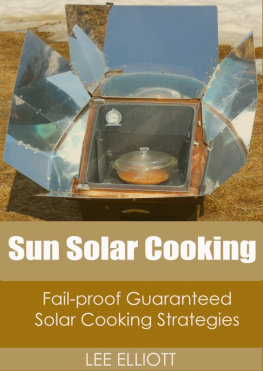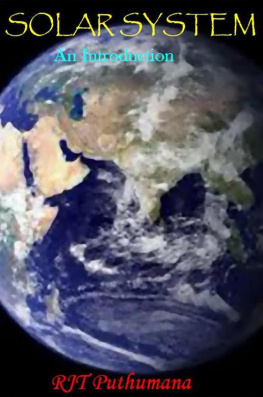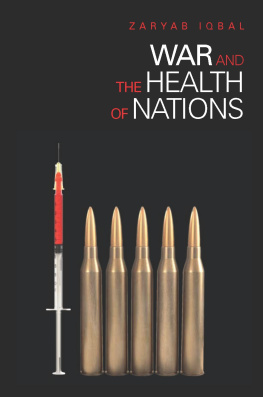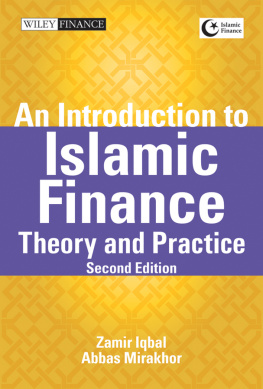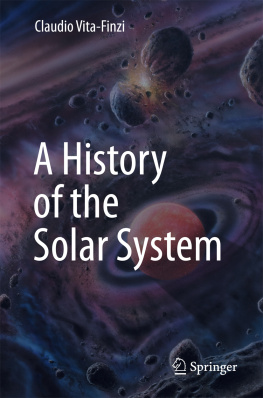Iqbal - An introduction to solar radiation
Here you can read online Iqbal - An introduction to solar radiation full text of the book (entire story) in english for free. Download pdf and epub, get meaning, cover and reviews about this ebook. City: New York, Toronto, year: 1983, publisher: Elsevier Science;Academic Press Inc, genre: Children. Description of the work, (preface) as well as reviews are available. Best literature library LitArk.com created for fans of good reading and offers a wide selection of genres:
Romance novel
Science fiction
Adventure
Detective
Science
History
Home and family
Prose
Art
Politics
Computer
Non-fiction
Religion
Business
Children
Humor
Choose a favorite category and find really read worthwhile books. Enjoy immersion in the world of imagination, feel the emotions of the characters or learn something new for yourself, make an fascinating discovery.

An introduction to solar radiation: summary, description and annotation
We offer to read an annotation, description, summary or preface (depends on what the author of the book "An introduction to solar radiation" wrote himself). If you haven't found the necessary information about the book — write in the comments, we will try to find it.
Iqbal: author's other books
Who wrote An introduction to solar radiation? Find out the surname, the name of the author of the book and a list of all author's works by series.
An introduction to solar radiation — read online for free the complete book (whole text) full work
Below is the text of the book, divided by pages. System saving the place of the last page read, allows you to conveniently read the book "An introduction to solar radiation" online for free, without having to search again every time where you left off. Put a bookmark, and you can go to the page where you finished reading at any time.
Font size:
Interval:
Bookmark:
Muhammad Iqbal
Department of Mechanical Engineering, The University of British Columbia, Vancouver, British Columbia, Canada

C OPYRIGHT 1983, BY ACADEMIC PRESS CANADA
ALL RIGHTS RESERVED .
NO PART OF THIS PUBLICATION MAY BE REPRODUCED OR TRANSMITTED IN ANY FORM OR BY ANY MEANS, ELECTRONIC OR MECHANICAL, INCLUDING PHOTOCOPY, RECORDING, OR ANY INFORMATION STORAGE AND RETRIEVAL SYSTEM, WITHOUT PERMISSION IN WRITING FROM THE PUBLISHER .
ACADEMIC PRESS CANADA
55 Barber Greene Road, Don Mills, Ontario M3C 2A1
United States Edition published by ACADEMIC PRESS, INC.
111 Fifth Avenue, New York, New York 10003
United Kingdom Edition published by ACADEMIC PRESS, INC. (LONDON) LTD.
24/28 Oval Road, London NW1 7DX
| Library of Congress Cataloging in Publication Data | Canadian Cataloguing in Publication Data |
| Iqbal, Muhammad | Iqbal, Muhammad |
| An introduction to solar radiation. | An introduction to solar radiation |
| Includes index. | Bibliography: p. |
| 1. Solar radiation. I. Title. | Includes index. |
| QC911.I63 1983551.527182-7416 | ISBN 0-12-373750-8 |
| ISBN 0-12-373750-8 | ISBN 0-12-373752-4 (pbk.) |
| ISBN 0-12-373752-4 (pbk.) | |
| 1. Solar radiation. I. Title. | |
| QC911.I72551.5271C83-098054-7 |
83848586987654321
To my daughter, Isabeau Anisa
This book is written for those who must determine quantitatively the amount of solar radiation incident on a surface on the earth. The material has been derived from meteorological and engineering literature. The emphasis is on an understanding of the subject as well as on the methods of calculation.
The audience of this book can be divided into six groups: (1) energy analysts who are responsible for developing national programs on solar energy utilization and who are required to assess the potential of solar energy in their region; (2) designers of thermal devices, such as flat-plate collectors or concentrating devices, who need to calculate hourly and daily values of the incident radiation; (3) photovoltaic engineers who require an estimation of the spectral values of the direct plus diffuse solar radiation under cloudless skies; (4) architects and engineers who need to calculate thermal loads and natural illumination of buildings; (5) agronomists who need to estimate the radiative environment of plants; and (6) hydrologists who need to compute the amount of snowmelt and evaporation from reservoirs.
The required background for this book is some college-level elementary physics, chemistry, and calculus, and the book can form part of a course on solar energy utilization at senior-graduate levels or be used in an introductory course on solar radiation meteorology.
deals with extraterrestrial radiation. Detailed formulations treating instantaneous, hourly, and daily quantities of radiation incident on inclined planes are presented.
. The first part of this chapter describes earths cloudless-sky atmosphere (U.S.S.A. 1976), concentration of the various molecules, vertical distribution of ozone and its seasonal variation, vertical distribution of water vapor, evaluation of the precipitable water through its partial pressure or dew-point temperature, and description of the aerosols. The second part deals with the calculation of optical masses for air, ozone, and water vapor.
. This chapter essentially has four parts. In the first part, the basic Bouguer equation is laid down; Rayleigh and aerosol scattering are also described, and aerosol attenuation is described through ngstrms turbidity formula. In the second part, molecular absorption is described, and tables of the monochromatic attenuation coefficients are given for ozone, uniformly mixed gases, and water vapor. In the third part, the formulation to compute direct spectral irradiance is presented. In the fourth part, a simple empirical approach to calculate the diffuse spectral irradiance is demonstrated; however, in this approach multiple scattering is ignored. The diffuse irradiance is considered to have three components: (1) Rayleigh-scattered diffuse radiation, (2) aerosol-scattered diffuse radiation, and (3) multiply reflected diffuse radiation.
, in which three parameterization models of calculating direct and diffuse irradiance are described and compared with each other. Finally, a comparison is made between one of the three models and the ASHRAE algorithm for clear-sky irradiance. A revised ASHRAE algorithm is recommended.
treats the estimation of solar radiation arriving at horizontal surfaces on the earth through cloudy skies. Here, it is assumed that mean daily global (direct plus diffuse) radiation either is known from meteorological data or can be easily estimated through simple procedures such as the use of empirical correlations between global radiation and the number of bright sunshine hours or cloud cover. A number of such correlations are described, site dependent as well as site independent. The rest of the chapter discusses methods of predicting diffuse radiation when the global value is known. A critical examination of the predictive correlations for global as well as diffuse radiation is presented.
the ground albedo and its spectral and angular variation are described, and tables of the albedo values for natural ground covers and man-made surfaces are presented.
deals with calculation of angle factors. The angle factors between the ground and inclined surfaces and between the sky and inclined surfaces are developed.
. Direct, ground-reflected, and sky diffuse irradiance are taken up separately. Angular distribution of sky diffuse intensity is studied, and models of the anisotropic sky diffuse irradiance are presented.
. Development of the pyrheliometers beginning from Abbot water-flow and ngstrm electrical compensation to the modern cavity-type radiometers is presented. The different types of pyranometers and sunshine recorders are discussed. Sources of errors and methods of calibration are presented.
.
I have derived material from many research journals and am indebted to the authors of those publications and to these journals for granting permission to reproduce many useful diagrams and tables. A significant portion of this book is based on the research of several graduate students and assistants in this department who were supported by the Natural Sciences and Engineering Research Council of Canada. I am indebted to the Research Council for its indirect help. The Atmospheric Environment Service of Canada, which maintains an extensive radiation network and runs an excellent data collection and distribution system, was invaluable for development of this subject.
Several individuals have generously supplied me with unpublished reports, specific climatological data, and other useful information that has enriched this volume. I am particularly indebted to C. Frhlich for supplying the table of extraterrestrial solar spectral irradiance and many other helpful reports from the World Radiation Center, to John Hay for allowing me early access to some of his research publications, to Marie Mermier and P. Fournier for some of the French data, and to Schieldrup Paulsen for the Norwegian data. The comments of Eldon C. Boes, who reviewed the manuscript, helped me improve this text.
Font size:
Interval:
Bookmark:
Similar books «An introduction to solar radiation»
Look at similar books to An introduction to solar radiation. We have selected literature similar in name and meaning in the hope of providing readers with more options to find new, interesting, not yet read works.
Discussion, reviews of the book An introduction to solar radiation and just readers' own opinions. Leave your comments, write what you think about the work, its meaning or the main characters. Specify what exactly you liked and what you didn't like, and why you think so.


